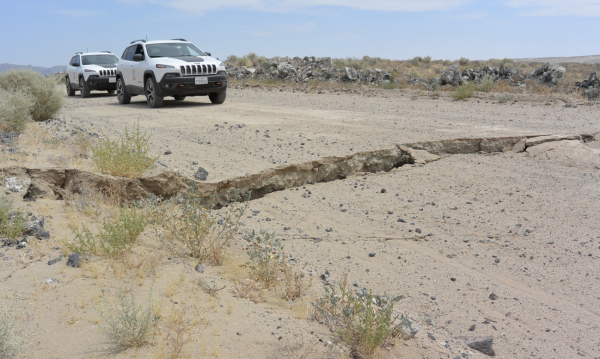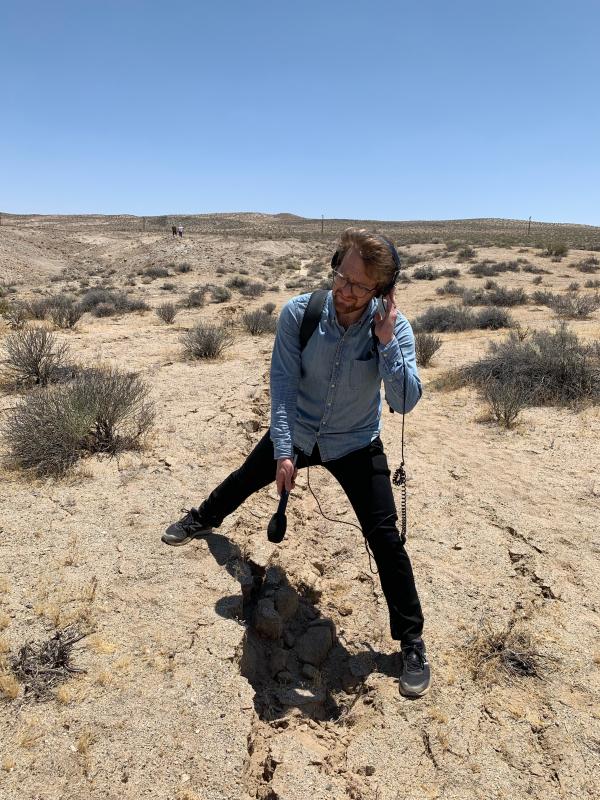KID REPORTERS’ NOTEBOOK
Preparing for the “Big One”


An earthquake in Southern California in early July caused this dirt road to rupture.
On July 4, a 6.4 magnitude earthquake rocked the Ridgecrest, California, area. More than 600 aftershocks of 3.0 or greater followed. The next day, another quake in the area measured 7.1 on the Richter scale. The scale estimates the strength of an earthquake, with 10.0 being the most destructive.
Jacob Margolis, a science reporter for KPCC, a radio station in Southern California, felt one of the stronger quakes. “It was at the end of a long day, and I was hanging out with my wife in my bedroom, reading,” Margolis later told me by phone. “All of a sudden, the room started shaking, the pots and pans started clanging, and the baby started crying.”
Fortunately, the earthquake only caused minor damage. It cannot compare with what scientists say is inevitable: the “Big One.”
“The Big One is a colloquial term for a major environmental event,” Margolis explained. “People in California use it to refer to an earthquake that will be massive in scale, and also massive in the damage that it could do.”

Science reporter Jacob Margolis has a light moment while conducting research.
BEAUTY AND DANGER
The San Andreas Fault, which extends roughly 750 miles through California, is the greatest cause for concern. It forms the tectonic (geological) boundary between the Pacific Plate and the North American Plate.
In 1906, the plates ruptured, causing an earthquake in Northern California with an estimated magnitude of 7.9. The quake, and a fire that swept through San Francisco, killed more than 3,000 people.
Scientists say that San Francisco and Los Angeles are still vulnerable to deadly earthquakes. But unlike tornadoes or hurricanes, it is impossible to predict when the Big One may occur.
“The benefit of the tectonics is we have beautiful scenery [in California],” acting state geologist Tim McCrink recently told the Los Angeles Times. “The downside is we have to live with earthquakes.”
“DUCK, COVER, AND HOLD ON”
Hearing about earthquakes and their likelihood can be scary, Margolis said, “but knowing what to do can make you feel less scared.” He experienced many earthquakes growing up in Los Angeles.
“Encourage your family to buy supplies,” Margolis added. “You should have one gallon of water per person, per day, as well as food to last 2 to 3 weeks. You should also have medicine, if necessary. And it’s important to secure items to the wall that could fall down or fall over.”
Staying away from windows, glass, and light fixtures is also important. “When an earthquake is happening,” Margolis said, “you should duck, cover, and hold on. You should not run. Don’t go into a doorway. Instead, get under something hard, like a table or a bench.”
“It will be very scary.” Margolis said. “And people have to know that it’s going to come.”
Although earthquakes can be stressful, you will feel a lot better knowing that you and your family have made a plan to stay safe.
